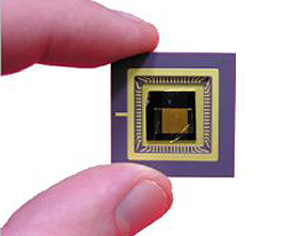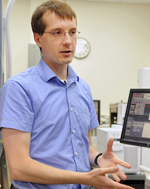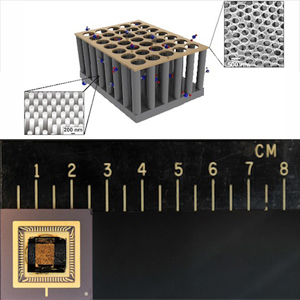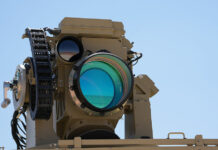

Scientists at the Naval Research Laboratory (NRL) have developed a technology to fabricate a sensor that could detect chemical substances traces in gaseous or liquid form, at unprecedented low concentrations. The new detector employs a new silicon fabrication technique called ‘Silicon Nanowires in a Vertical Array with a Porous Electrode’ (SiN-VAPOR); this technology has demonstrated detection capability on the parts-per-billion (PPB), and even parts-per-trillion level of sensitivity.

Currently, bomb-sniffing dogs and laboratory-grade equipment are the state-of-the-art technology for trace chemical detection. However, both of these options are expensive and require a trained professional to handle them. The challenge of detecting the IEDs is the identification of trace chemicals that are easily masked by abundant compounds like perfumes or diesel exhaust.
SiN-VAPOR architecture is unique and different from other explosive detection technologies in its three-dimensional architecture, thus maximizing the detectors’ surface area in order to maximize the sensing capabilities within the sensor. The sensors based on SiN-VAPOR is embedded on a silicon chip, forming a small, lightweight and portable device that will be able to integrate in other handheld devices such as wrist watches, smartphones, motion detectors, unattended ground sensors or wearable communications systems. “This sensor can be made for less than a dollar a piece, and uses less than a microwatt of power” Dr. Christopher Field, the NRL scientist leading this research said, adding such devices could be integrated into the warfighters’ and first responders gear, along with communications devices, such sensors could be networked into a persistent, distributed sensor network that could monitor the operating area, airport or protected facilities at all time.
“That means that we have a sensor about the size of a quarter that can detect very low concentrations of analytes in the vapor phase,” explains Field, such a detector would be that able to detect traces of chemical substances down to the tenth PPB. “We’re able to detect from the background, ten molecules of one analyte versus a billion of other molecules that may be in the same environment.”

According to Dr. Field the current sensor contains over a billion nanowires Dr. Field added. “Each wire is a sensor, so we essentially have a billion sensors on the size of a quarter.” Fields explain, adding that the final form factor for the complete sensor will be smaller and likely to be integrated in other handheld or wearable devices. According to Field, the SiN-VAPOR technology could help soldiers, first responders, firefighters, and medical professionals by improving their situational awareness of dangerous chemicals present in their operating area by constantly monitoring the environment, and instantly reporting the presence and concentration of toxic fumes or chemical traces that could indicate the presence of explosives, chemical warfare agents, toxic fumes etc.
Other applications could involve firefighting on ships or nuclear facilities, where robots are ‘recruited’ to fight blazes contained in closed areas. Such robots would first send in ‘micro flyers’ carrying SiN-VAPOR silicon chips, to scan the scene of a fire, locate the heat source, and report if toxic fumes are present. Other applications could assist counter-IED road clearing operations, where robot scouts equipped with SiN-VAPOR based sensors would be used to searching for explosive traces, indicating the possible presence of hidden threats.



















